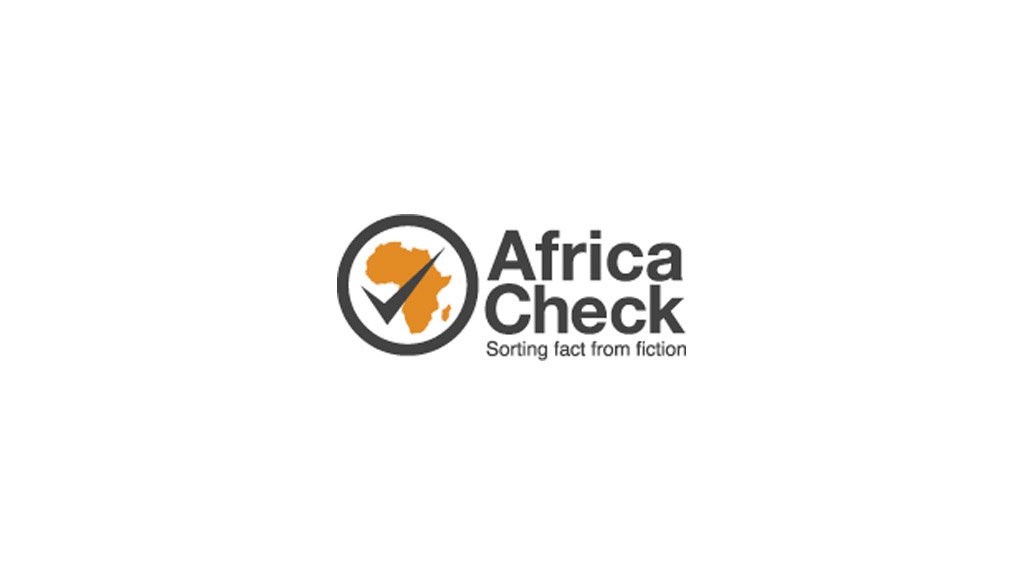The World Health Organization has withdrawn the claim from their French website as a result of this fact-check. “The 50% is definitely wrong, and we have removed [it] from the webpage – thanks for bringing it to our attention,” Ann-Beth Moller, technical officer in the World Health Organization’s reproductive health and research department, wrote to Africa Check.
Moller confirmed that the United Nations’ department of economic and social affairs are responsible for these estimates and the latest available is 11%.
Are teen mothers driving sub-Saharan Africa’s population growth?
Prestigious French newspaper Le Monde published an op-ed along this line last month. It was written by the director of the human development department of the French government’s development agency (Agence française de développement).
Marie-Pierre Nicollet argued for improved sex education for African pupils and wrote: “In sub-Saharan Africa, 50% of births occur during adolescence.”
Africa Check previously determined that teen births in sub-Saharan Africa have declined over the past 25 years. But are they still so frequent as to contribute half of the region’s births?
‘Not clear whether data comes from WHO’
Nicollet told our French colleagues in Dakar that she relied on the adolescent health section of the World Health Organization (WHO) website in French. (Note: The page relates to adolescents between 15 and 19 years old.)
There is no mention of the claim on the corresponding English page, but a 2008 WHO factsheet on the topic contained it: “The proportion of births that take place during adolescence is about 2% in China, 18% in Latin America and the Caribbean and more than 50% in sub-Saharan Africa.”
When asked, Dr Doris Chou, a medical officer in the WHO’s department of reproductive health and research, told us she had asked her colleagues whether the data was correct. “Right now, it’s not clear whether the data comes from WHO,” she added.
The WHO have since removed the page from their French section, but did not indicate to users that it has done so.
Most babies born to mothers aged 25-29
If not half, then what is the share of births to teen mothers?
Africa Check turned to the source we were previously told is the most comprehensive: the United Nations economic and social affairs department’s World Fertility Patterns 2015. It is compiled from “censuses, surveys, vital and population registers, analytical reports and other sources for a given country”.
Pointing to a column on page 17 of the report, the United Nations Population Fund’s Fredrick Okwayo told Africa Check the “assertion that 50% of births in sub-Saharan African countries are by adolescents is not correct”. Okwayo is a technical adviser on population data policy in the fund’s evidence, knowledge and innovation unit.
He provided Africa Check with a table that showed most babies born in sub-Saharan Africa between 2010 and 2015 were to mothers aged between 25 and 29. Teenage mothers contributed 11% of total births.
| Age group | % contribution |
| 15-19 | 11 |
| 20-24 | 23 |
| 25-29 | 24 |
| 30-34 | 20 |
| 35-39 | 14 |
| 40-44 | 7 |
| 45-49 | 2 |
* Total adds up to 101% due to rounding
Conclusion: WHO’s (removed) figure incorrect
When a French development expert researched teenage fertility in Africa for a newspaper article, she relied on one of the most authoritative sources available: the World Health Organization’s website.
It stated that more than 50% of births in sub-Saharan Africa were to teenage mothers. But the most recent estimate of the UN Population Fund puts it at a fifth of that, with 11% of births between 2010 and 2015 to teen moms.
The WHO has since removed the page from their website, but did not indicate the reason why.
Researched by Anim van Wyk & Khady Cissé, Africa Check, a non-partisan organisation which promotes accuracy in public debate and the media. Twitter @AfricaCheck and www.africacheck.org
EMAIL THIS ARTICLE SAVE THIS ARTICLE
To subscribe email subscriptions@creamermedia.co.za or click here
To advertise email advertising@creamermedia.co.za or click here











